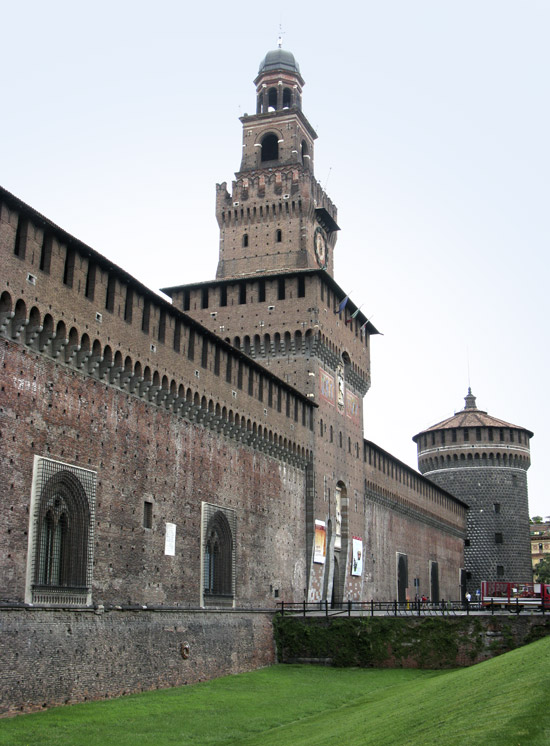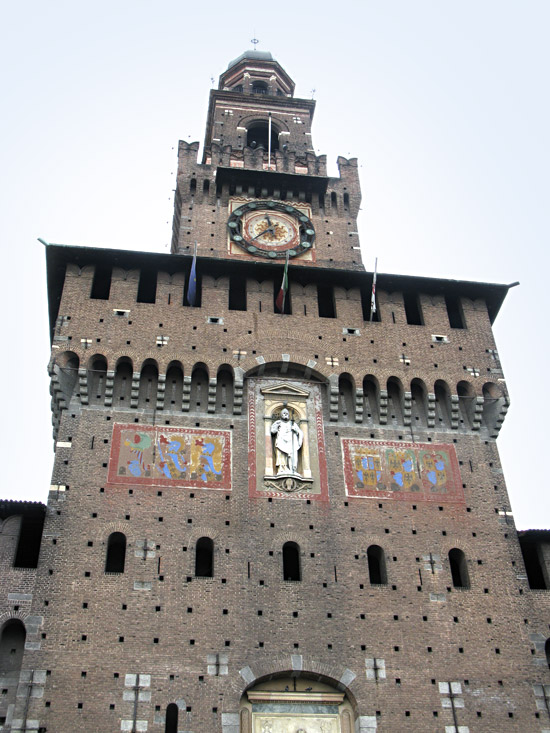The little girl was unrestrained and so pleased with herself. She and I both saw the humor of her Minnie Mouse joining Michelangelo’s unfinished Rondanini Pietá. As I think about it further, I wonder which creator, Michelangelo or Disney, has had greater cultural influence? (Many would be aghast at my putting those two in the same sentence, but it’s a legitimate question.)
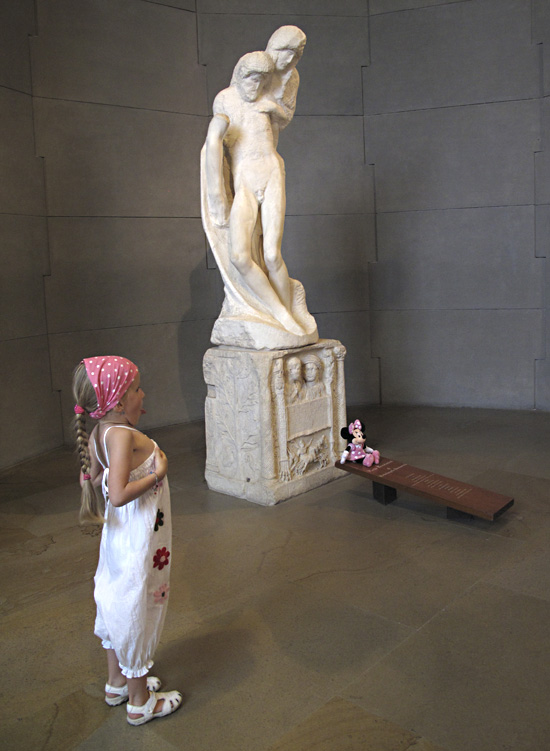
Though I’ve been in and around the Castello Sforzesco, one of the jewels of Milano, a number of times while here, I had not gone in to view the art and history exhibitions there. Before my departure, I wanted to “at least” see the Rondanini. Michelangelo had worked on this Pietá for many years and, they say, even up to a few days before his death in 1564. Here’s a video about the restoration done on the Rondanini Pietá (in Italian, but visually interesting, nonetheless, for those that don’t understand it).
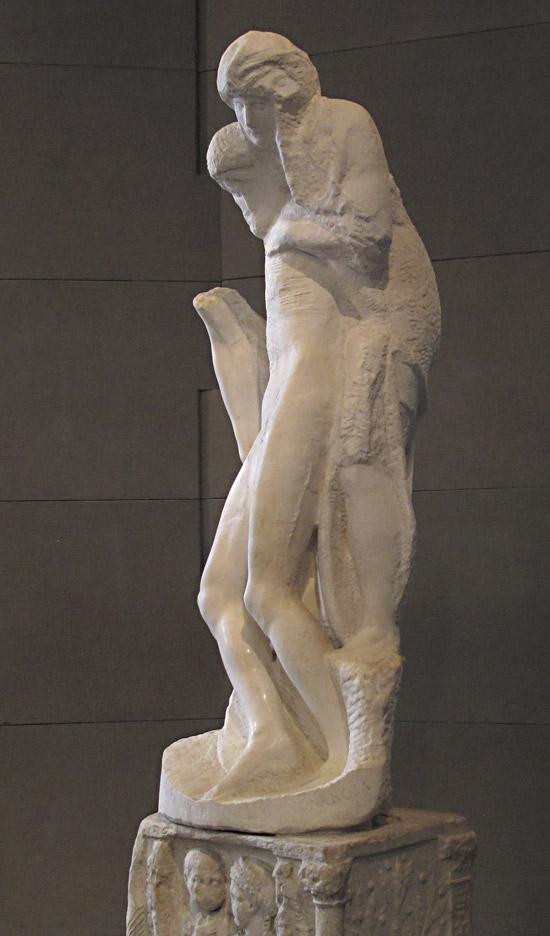

Leonardo da Vinci also left his mark in the city of Milano. He lived here for roughly 20 years and followed not only artistic pursuits, but also military and civil engineering efforts. (He designed water-flow “locks” on the Naviglio Pavese canal along which I ride my bike so frequently.) His world-renowned “Last Supper” is here in Milano at the monastery of Santa Maria della Grazie. Viewing tickets are sold months in advance, and the large salon hosting the wall mural has an atmosphere very carefully controlled to preserve what’s left of the dry fresco.
At the Castello, on the other hand, I readily walked in and bought a 3 Euro ticket to view the whole museum complex. I proceeded past stone remnants from centuries past.
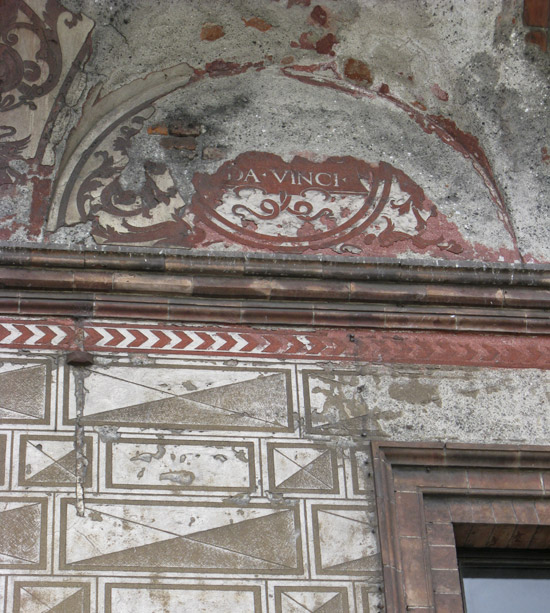
“Court of the Dukes Museum of Art”
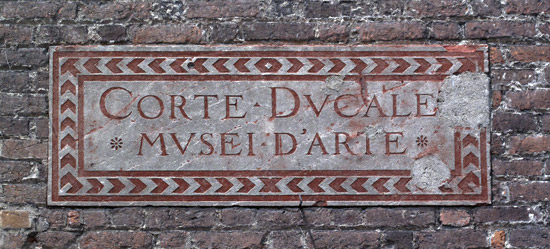
(This letter “P” is for my sister, by special request.)
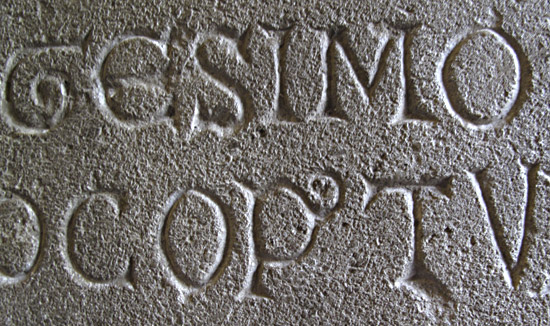
And I was amused by this type correction. (Ooops.)

I walked into grand rooms with elaborately painted ceilings and draped with tapestries, this one of St. Ambrogio, the patron saint of Milano.
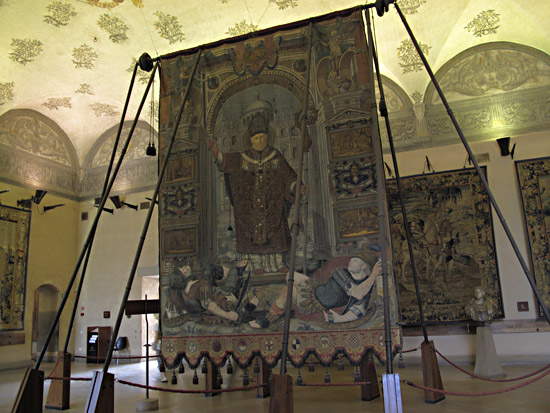
And then I walked into an entirely unexpected and very dark room. The “Sala delle Asse” was painted by Leonardo c. 1498 across the full expanse of its ceiling and down onto its walls. Quite unlike the iconic “Last Supper”, this canopy of foliage, trunks, stone and scrollwork creates a tangle of visual detail. At first glance it looks like a mess, as if the whole surface had been consumed by black mold over the years, with a few, still-vivid blue shields positioned at quarters.
The ceiling has an equally tangled history of “restorations”, including a complete whitewash covering, subsequent cleaning and color “enhancements”. The room was restored again in 1954, undoing the heavy-handed treatments it had suffered in centuries past.
It was a hard place to photograph, but you can find more images here. (Looking at some of them, I can’t believe we were looking at the same ceiling!)
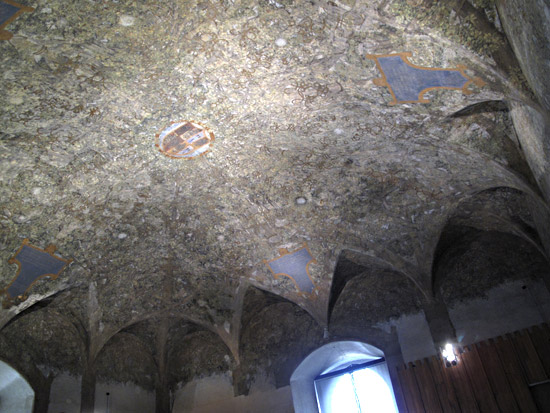
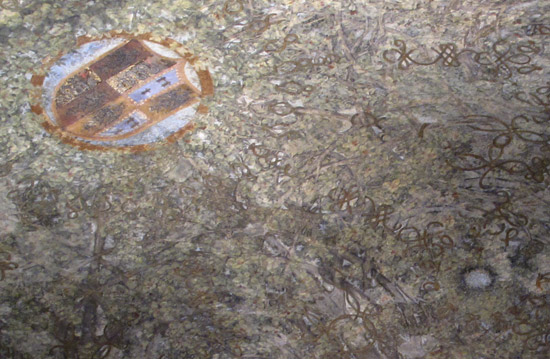
The Castello has a grand inner courtyard, with an interior moat home to dozens of cats! The museum sections are housed in the building ring around the courtyard.
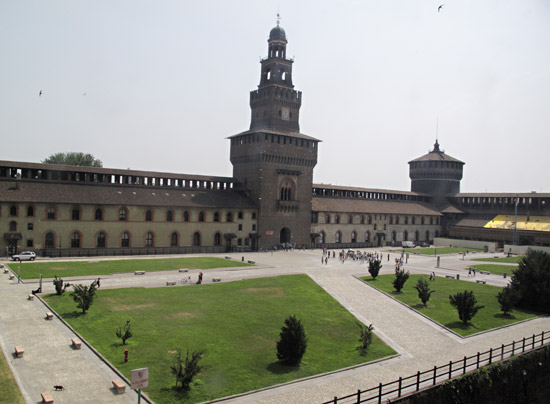
The Castello Sforzesco is a hub and a landmark for the city, stalwart and visible from a distance. One can make the short, straight walk from Castello to Duomo.
